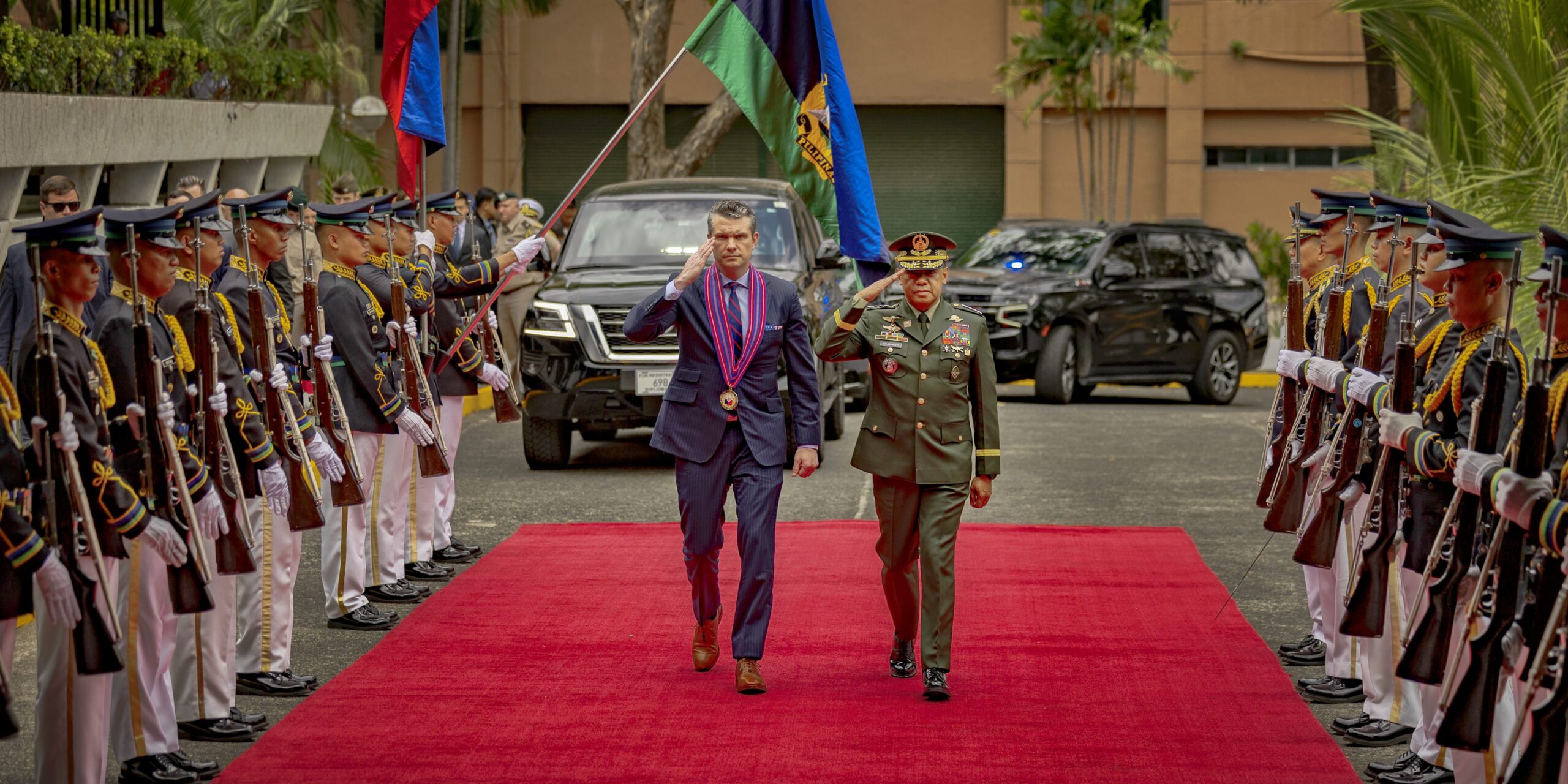World
U.S. Military Expands Presence in Philippines Amid Regional Tensions

The United States has discreetly deployed long-range missile launchers in the Philippines, bringing them within striking distance of mainland China. This strategic move, which has gone largely unnoticed by the public, marks the latest development in the U.S.-Philippine military partnership. As part of a broader strategy to counter China’s influence in the region, the U.S. is preparing to introduce a second Typhon missile system to the archipelago.
Defense Secretary Pete Hegseth emphasized the enduring military cooperation between the U.S. and the Philippines, stating, “Our partnership not only continues today, but we are doubling down on that partnership, and our ironclad alliance has never been stronger.” This alliance dates back to a mutual defense treaty established in 1951, which has seen various expansions in military activities over the decades.
Filipino activists, however, have voiced strong opposition to the growing U.S. military presence. Mong Palatino, secretary-general of the progressive coalition Bagong Alyansang Makabayan, expressed concern that the Philippines is being utilized as a testing ground for U.S. military systems. “We are being used as a training ground, as an experiment ground for the U.S. missile system,” he told The Intercept. Activists argue that this reliance undermines the Philippines’ sovereignty and security.
The deployment of the Typhon missile system has triggered a stern reaction from China. The Chinese government has warned that such military installations could lead to “self-inflicted destruction” for the Philippines and destabilize the region. In its latest national security white paper, China condemned the presence of “intermediate-range missile systems” and criticized what it described as a “Cold War mentality.” With ongoing maritime disputes in the South China Sea, China has indicated that the presence of U.S. missiles in the Philippines would complicate these tensions further.
The history of U.S. military involvement in the Philippines is complex and fraught with local resistance. Following decades of American colonial rule and the closure of major military bases in the early 1990s, many Filipinos have remained wary of foreign military presence. The recent increase in U.S. military activity comes during the presidency of Ferdinand Marcos Jr., who has sought to strengthen relations with Washington after a period of distancing under former President Rodrigo Duterte.
The first Typhon missile launcher, capable of striking targets up to 1,200 miles away, was installed in the Philippines as part of annual military exercises in 2022. The U.S. has committed approximately $82 million to enhance military infrastructure at existing bases, and a new ammunition manufacturing facility is set to be established near Subic Bay, formerly the largest U.S. naval base in Asia.
Public awareness of these developments in the Philippines remains low, and many Americans are unaware of the potential implications of this military expansion. The situation raises concerns about the possibility of escalating tensions with China, a nuclear power, that could have dire consequences for the region and for the Philippines itself.
As history shows, the repercussions of military alliances can be profound. The ongoing conflict in Ukraine serves as a recent reminder of how quickly situations can deteriorate and the significant costs involved. Filipino activists argue for a more diplomatic approach to maritime disputes, insisting that the Philippines should not be used as a forward military base for U.S. operations.
Palatino summarized the sentiment among activists: “We should resolve our maritime dispute with China diplomatically and peacefully.” As the U.S. military solidifies its presence in the Philippines, the need for public discourse and transparency regarding these actions becomes increasingly urgent. The stakes are high, and the future of regional stability hangs in the balance.
-

 Lifestyle3 months ago
Lifestyle3 months agoLibraries Challenge Rising E-Book Costs Amid Growing Demand
-

 Sports3 months ago
Sports3 months agoTyreek Hill Responds to Tua Tagovailoa’s Comments on Team Dynamics
-

 Sports3 months ago
Sports3 months agoLiverpool Secures Agreement to Sign Young Striker Will Wright
-

 Lifestyle3 months ago
Lifestyle3 months agoSave Your Split Tomatoes: Expert Tips for Gardeners
-

 Lifestyle3 months ago
Lifestyle3 months agoPrincess Beatrice’s Daughter Athena Joins Siblings at London Parade
-

 World3 months ago
World3 months agoWinter Storms Lash New South Wales with Snow, Flood Risks
-

 Science3 months ago
Science3 months agoTrump Administration Moves to Repeal Key Climate Regulation
-

 Science2 months ago
Science2 months agoSan Francisco Hosts Unique Contest to Identify “Performative Males”
-

 Business3 months ago
Business3 months agoSoFi Technologies Shares Slip 2% Following Insider Stock Sale
-

 Science3 months ago
Science3 months agoNew Tool Reveals Link Between Horse Coat Condition and Parasites
-

 Sports3 months ago
Sports3 months agoElon Musk Sculpture Travels From Utah to Yosemite National Park
-

 Science3 months ago
Science3 months agoNew Study Confirms Humans Transported Stonehenge Bluestones









